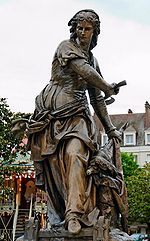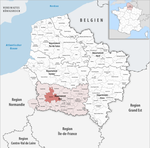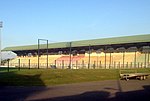Beauvais
BeauvaisBellovaciCities in FranceCommunes of OisePages including recorded pronunciations ... and 3 more
Pages with French IPAPages with disabled graphsPrefectures in France

Beauvais (US: boh-VAY, French: [bovɛ] ; Picard: Bieuvais) is a town and commune in northern France, and prefecture of the Oise département, in the Hauts-de-France region, 75 kilometres (47 miles) north of Paris. The commune of Beauvais had a population of 56,020 as of 2016, making it the most populous town in the Oise department, and third most populous in Picardy. Together with its suburbs and satellite towns, the metropolitan area of Beauvais has a population of 128,020. The region around Beauvais is called the Beauvaisis.
Excerpt from the Wikipedia article Beauvais (License: CC BY-SA 3.0, Authors, Images).Beauvais
Rue de l'Orangerie, Beauvais
Geographical coordinates (GPS) Address Nearby Places Show on map
Geographical coordinates (GPS)
| Latitude | Longitude |
|---|---|
| N 49.4303 ° | E 2.0952 ° |
Address
Boulodrome couvert du parc Kennedy
Rue de l'Orangerie
60000 Beauvais
Hauts-de-France, France
Open on Google Maps









